Traveling the world opens up plenty of experiences, sights, and the opportunity to bring back a piece of each destination. However, the conscientious traveler looks beyond the typical tourist trinkets, seeking souvenirs that serve as mementos and support local artisans and the environment. Eco-friendly souvenirs embody the essence of sustainable travel, offering locally made goods, often by hand, from natural or recycled materials. These items minimize environmental impact, contribute to the local economy, and preserve traditional crafts. This guide explores twelve ideas for eco-friendly souvenirs that support local artisans around the globe, ensuring that your keepsakes carry a story worth telling.
1. Handwoven Textiles in Guatemala
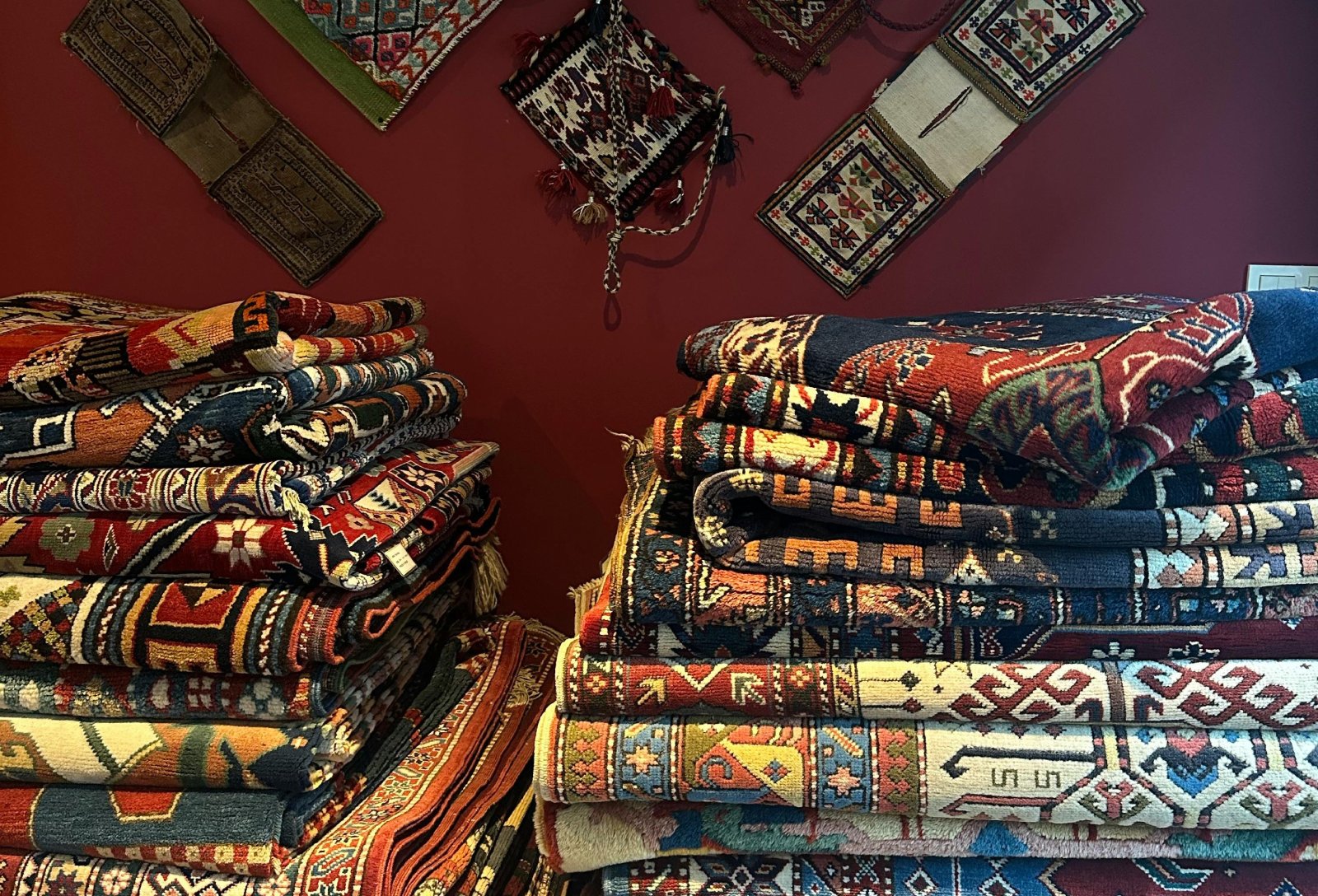
Image Credit: Pexels / Fatma DELİASLAN
Guatemala is renowned for its vibrant, handwoven textiles, crafted using techniques passed down through generations. Local artisans, primarily indigenous women, use backstrap looms to weave colorful fabrics that are then made into clothing, bags, and home decor. Each region has unique patterns, making these textiles a meaningful souvenir that supports local traditions and the environment, as many are made from natural fibers and dyes.
Insider’s Tip: Visit a local cooperative or market where you can meet the artisans and learn about the weaving process. This direct interaction not only enriches your travel experience but ensures that your purchase directly benefits the community.
When to Travel: The dry season, from November to April, is the best time to visit Guatemala, offering pleasant weather for exploring markets and artisan workshops.
How to Get There: Fly into La Aurora International Airport in Guatemala City. From there, Antigua, a city known for its textiles, is just an hour’s drive away and serves as a good base for exploring nearby textile-producing regions.
2. Pottery in Morocco
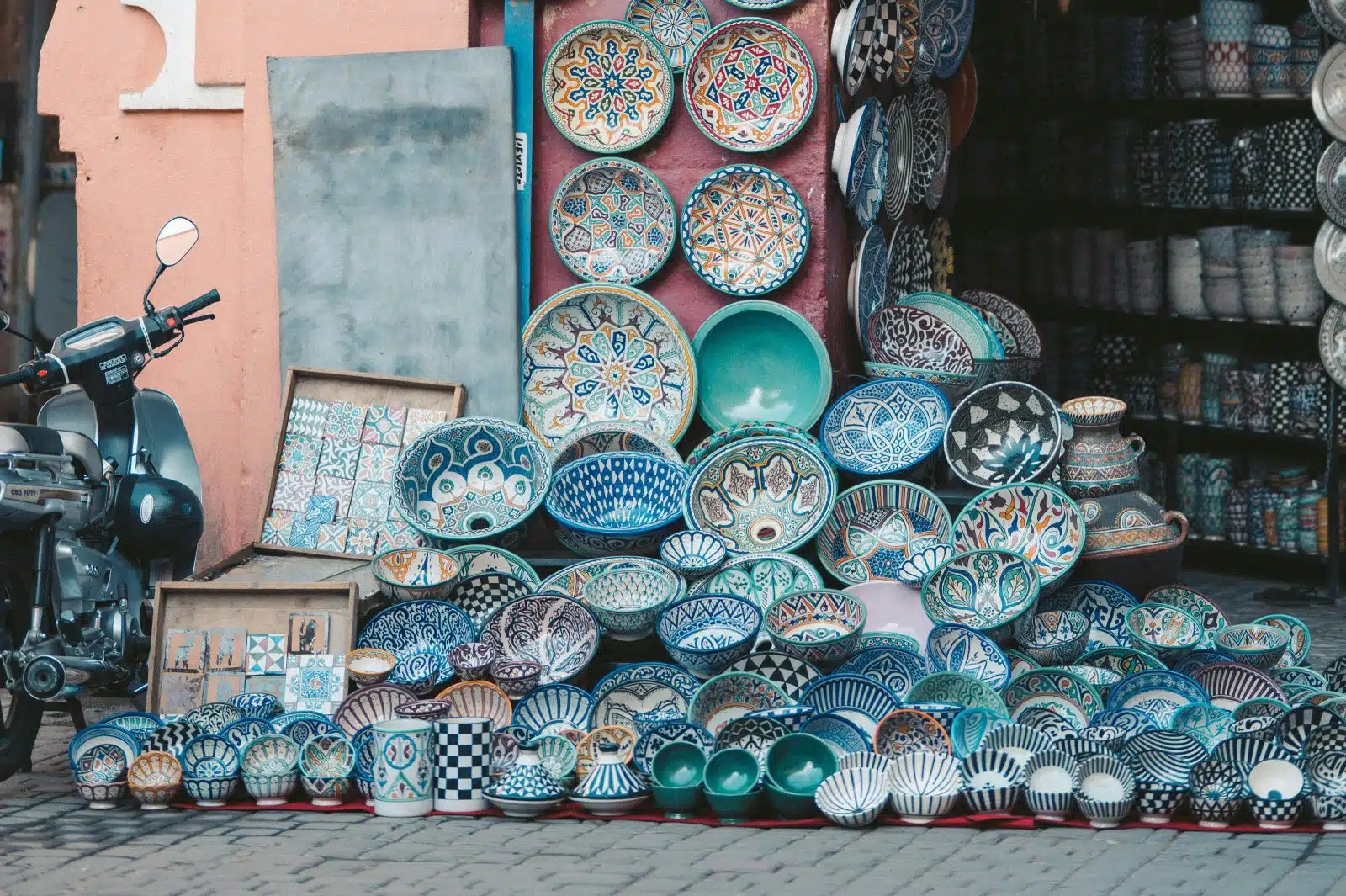
Image Credit: Pexels / Taryn Elliott
Moroccan pottery, with its intricate designs and rich colors, reflects the country’s diverse cultural heritage. Cities like Fez and Safi are famous for their ceramic arts, where artisans use age-old techniques to create everything from ornate tagines to beautifully decorated plates and vases. These pieces are functional and serve as eco-friendly reminders of your travels, crafted from natural clay and painted with mineral-based glazes.
Insider’s Tip: Opt for handmade and kiln-fired pieces using traditional methods, which support sustainable practices and offer a higher quality souvenir.
When to Travel: Spring (March to May) and fall (September to November) are ideal for visiting Morocco, avoiding the extreme heat of summer and the chill of winter.
How to Get There: Major cities like Fez and Marrakech have international airports with flights from Europe and other regions. Safi can be reached by train or car from Marrakech or Casablanca.
3. Recycled Metal Art in Haiti

Image Credit: Pexels / Kateryna Babaieva
In Haiti, artisans transform discarded oil drums into stunning pieces of art, cutting, hammering, and embossing the metal into intricate designs. This practice supports local artists and promotes recycling and environmental sustainability. The artwork ranges from decorative wall hangings to functional items like mirrors and candle holders, each telling a story of resilience and creativity.
Insider’s Tip: Purchase directly from artisan collectives or community workshops to ensure the artists receive fair compensation for their work.
When to Travel: The best time to visit Haiti is from November to March, during the dry season, when the weather is cooler and the risk of hurricanes is lower.
How to Get There: Fly into Toussaint Louverture International Airport in Port-au-Prince. Artisan workshops can be found throughout the city and in nearby areas.
4. Wooden Carvings from Bali, Indonesia

Image Credit: Pexels / KATRIN BOLOVTSOVA
Bali, Indonesia, is celebrated for its intricate wooden carvings, a craft passed down through generations of artisans. These carvings, from deities and mythical creatures to scenes of daily life, are made from locally sourced wood, ensuring sustainability. By purchasing these carvings, travelers support preserving Balinese culture and the livelihoods of local artisans who rely on traditional skills.
Insider’s Tip: Seek carvings from sustainable woods like bamboo or reclaimed teak. Visit artisans in villages like Mas, where you can witness the carving process firsthand and learn about the cultural significance of each piece.
When to Travel: The best time to visit Bali for cultural exploration is during the dry season, from April to October, when the weather is conducive to traveling around the island.
How to Get There: Fly into Ngurah Rai International Airport in Denpasar, Bali. Mas and other artisan villages are accessible by car or scooter from major tourist areas like Ubud.
5. Handmade Jewelry in Greece

Image Credit: Pexels / COPPERTIST WU
Greece’s rich history and natural beauty inspire local artisans to create exquisite handmade jewelry. Using techniques that date back to ancient times, these craftsmen work with silver, gold, and locally sourced stones to produce pieces that reflect the country’s artistic heritage. Buying handmade jewelry in Greece provides a unique, eco-friendly souvenir, supports small businesses, and preserves traditional craftsmanship.
Insider’s Tip: Look for jewelry inspired by ancient Greek designs or incorporating Greek motifs such as the meander or olive leaves. Visit artisan workshops in neighborhoods like Plaka in Athens to find authentic pieces.
When to Travel: Spring (March to May) and fall (September to November) offer mild weather and fewer crowds, ideal for leisurely exploring Greece’s markets and artisan shops.
How to Get There: Athens International Airport serves as the main gateway to Greece. From Athens, you can explore local markets or take short domestic flights or ferries to islands known for their jewelry-making traditions.
6. Beadwork in South Africa

Image Credit: Shutterstock / Gordine N
With its vibrant colors and intricate patterns, South African beadwork represents a significant aspect of the country’s cultural heritage. Artisans, often women from rural communities, create beadwork that includes jewelry, decorative items, and traditional clothing. This craft supports the artisans financially and plays a crucial role in cultural expression and preservation.
Insider’s Tip: Purchase beadwork from cooperatives or community projects that ensure fair compensation to the artisans. Each piece’s colors and patterns have specific meanings, so ask about the story behind your purchase.
When to Travel: South Africa is a year-round destination, but visiting from May to September (the dry season in most regions) can be ideal for wildlife viewing, adding another dimension to your trip.
How to Get There: Major international airports in South Africa include Johannesburg’s O.R. Tambo International Airport and Cape Town International Airport. Local markets and artisan cooperatives can be found throughout the country, particularly in regions known for their cultural heritage.
7. Organic Textiles in Peru
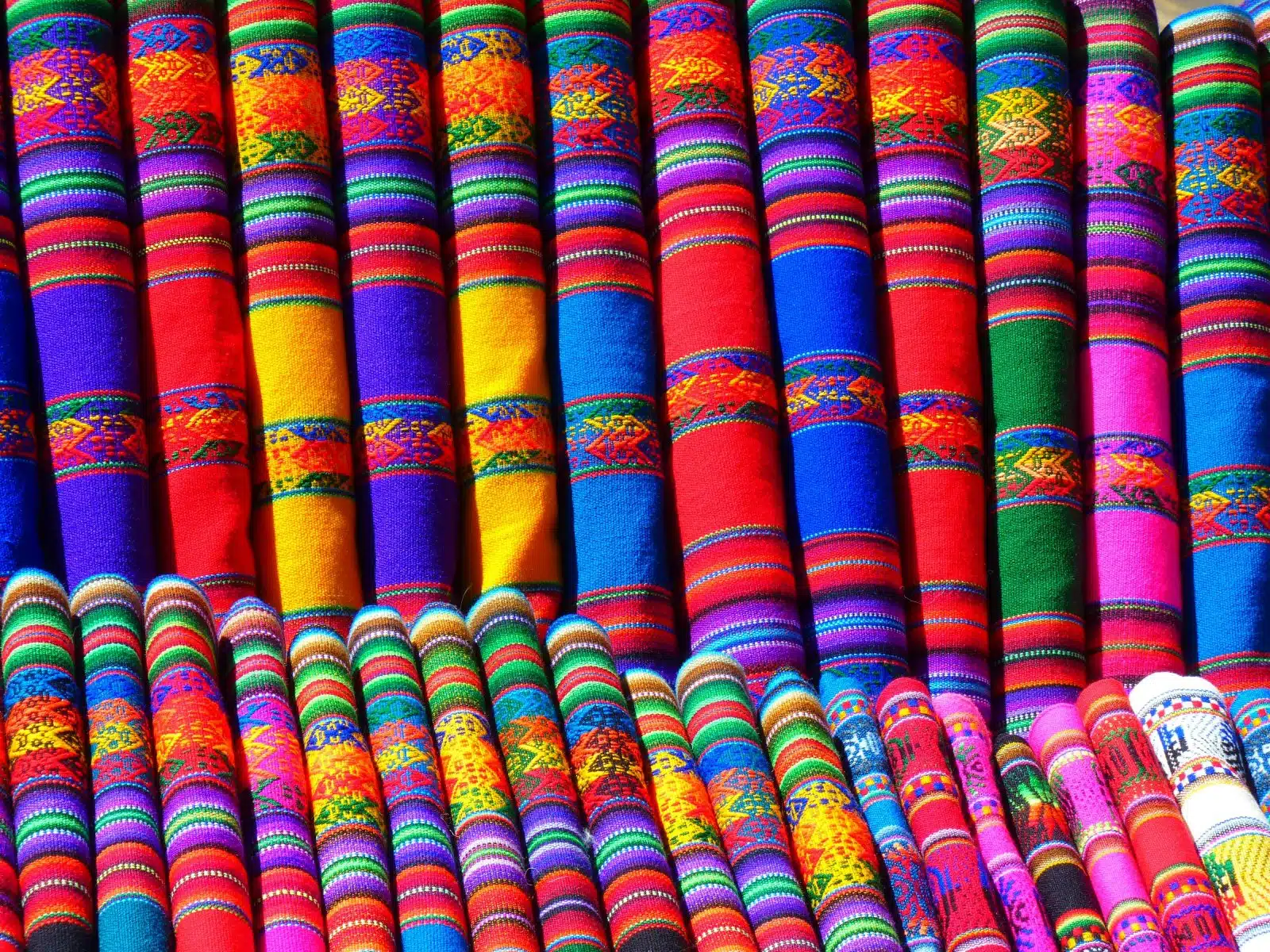
Image Credit: Pexels / Pixabay
Peru is renowned for its organic textiles from naturally sourced materials such as alpaca wool and Pima cotton. Local artisans employ age-old techniques to spin, dye, and weave textiles that are then fashioned into garments, accessories, and home decor. These practices not only support sustainable farming and production methods but also contribute to the preservation of Peruvian cultural traditions.
Insider’s Tip: When purchasing textiles, look for certifications or signs that indicate organic materials and fair trade practices. Visiting artisan communities in the Sacred Valley or around Cusco can provide insight into the textile-making process.
When to Travel: The best time to visit Peru, particularly for cultural and artisanal exploration, is during the dry season from May to September.
How to Get There: Lima’s Jorge Chávez International Airport is the primary entry point to Peru. From Lima, domestic flights, buses, or trains can take you to Cusco, the Sacred Valley, and other regions known for textile production.
8. Olive Oil from Tuscany, Italy
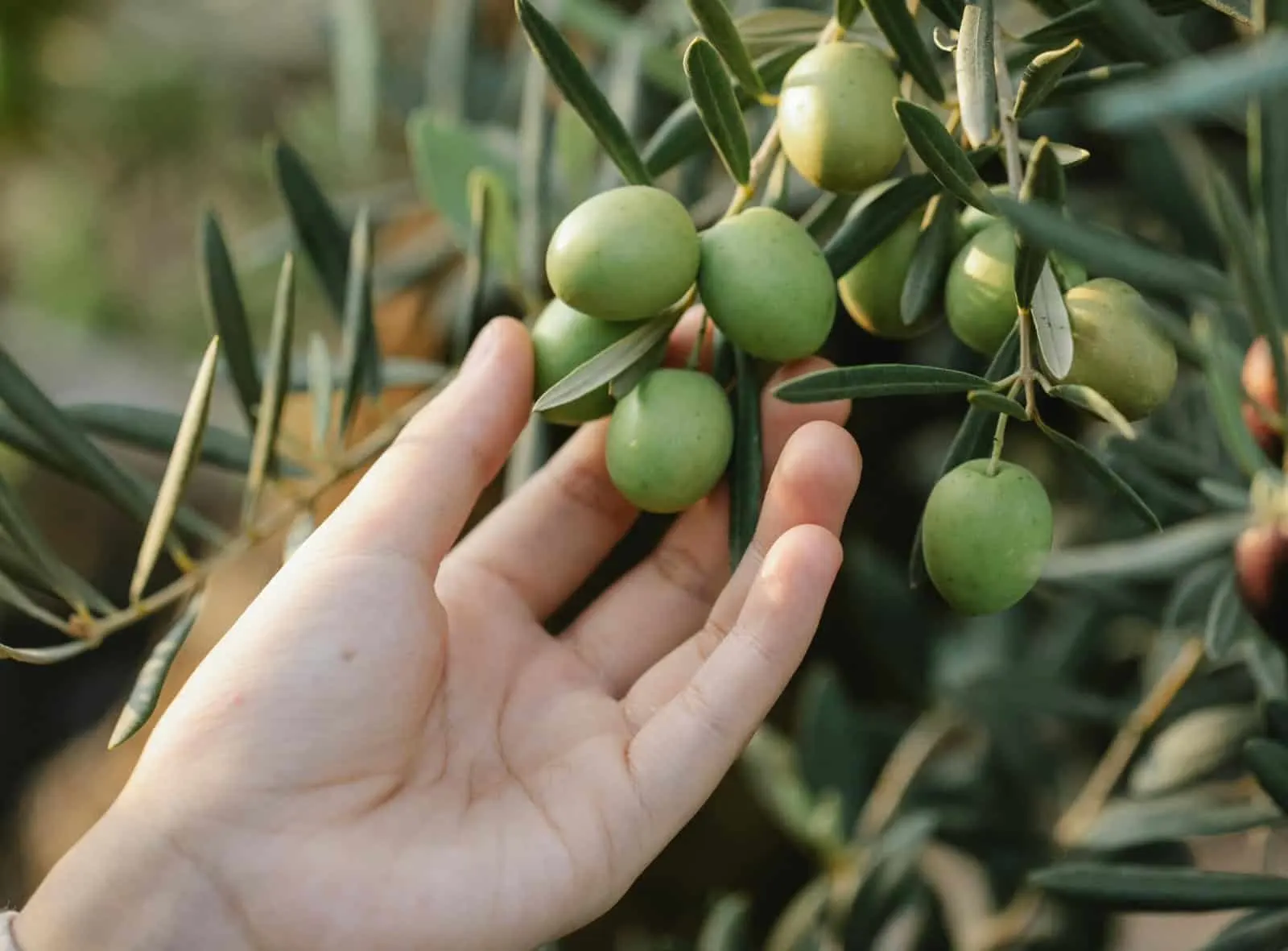
Image Credit: Pexels / Gary Barnes
Tuscany is celebrated for its exquisite olive oil, a staple of Italian cuisine known for its flavor and health benefits. Local artisans in Tuscany use traditional, sustainable methods to cultivate olives and press them into oil, ensuring a high-quality, eco-friendly product. Purchasing olive oil directly from these small-scale producers supports the local economy and promotes agricultural practices that harmonize with the environment.
Insider’s Tip: Look for olive oil labeled “extra virgin” and “cold-pressed,” and consider visiting during the olive harvest in November for a more hands-on experience.
When to Travel: Spring (April to June) and fall (September to November) are ideal for visiting Tuscany, offering pleasant weather and the chance to participate in or observe the olive harvest.
How to Get There: Fly into Florence or Pisa, where you can rent a car to explore the Tuscan countryside and visit local olive oil producers.
9. Handcrafted Baskets from Botswana
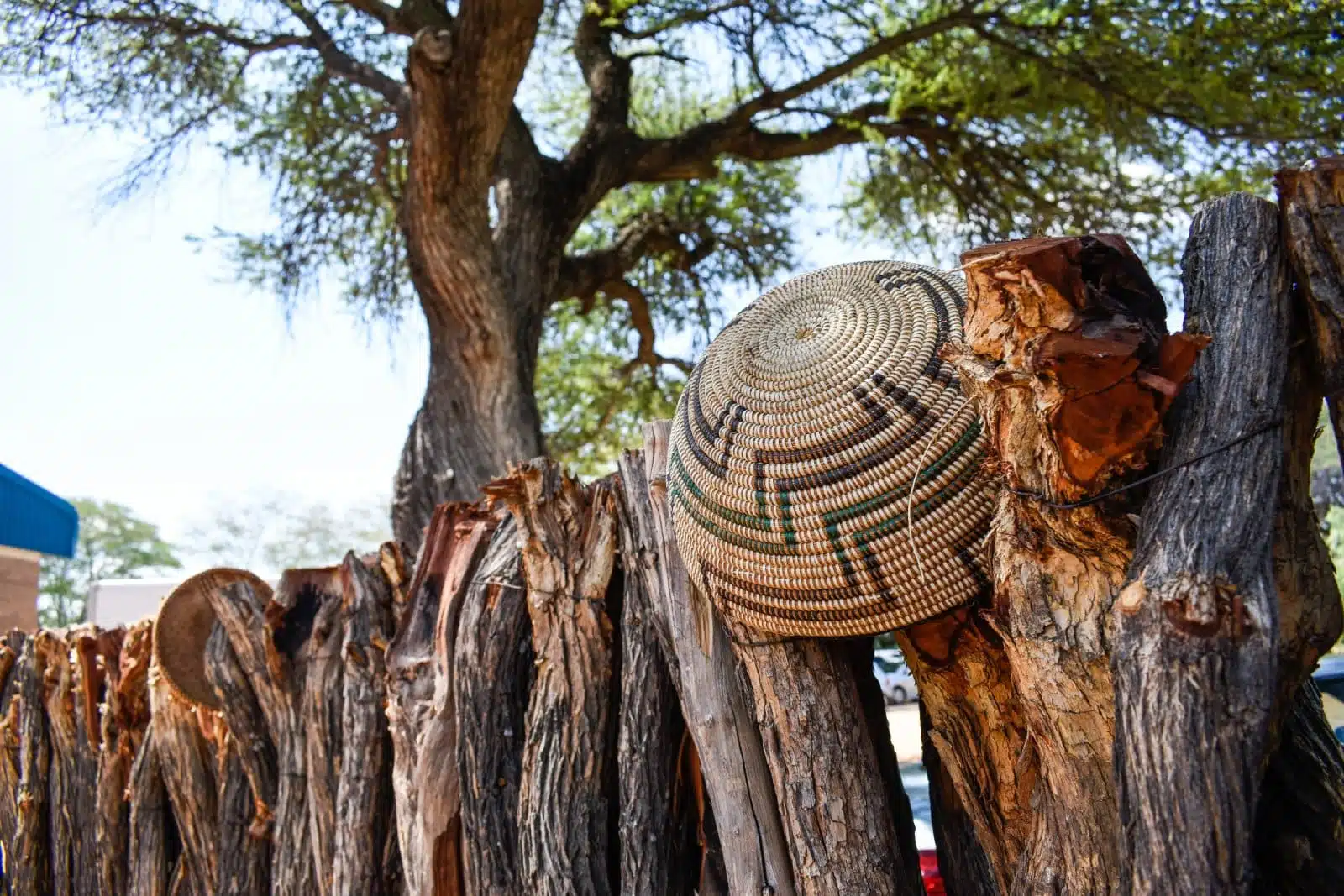
Image Credit: Shutterstock / LawrenceTsaoneBahiti
Botswana’s handcrafted baskets are renowned for their intricate designs and craftsmanship. Made from locally sourced materials such as Mokola Palm and featuring patterns that reflect the country’s natural beauty and cultural heritage, these baskets showcase the skill of Botswana’s weavers. Purchasing these baskets supports local artisans and helps preserve traditional crafts that have been passed down through generations.
Insider’s Tip: Visit local markets or cooperatives to meet the weavers, learn about the significance of the different patterns, and ensure that your purchase directly benefits the artisan community.
When to Travel: The dry season from May to October is the best time to visit Botswana, offering optimal wildlife viewing opportunities to complement your cultural exploration.
How to Get There: Fly into Sir Seretse Khama International Airport in Gaborone or Maun Airport if you’re combining your cultural trip with a safari. Local markets across the country offer a wide selection of handcrafted baskets.
10. Sustainable Cork Products from Portugal
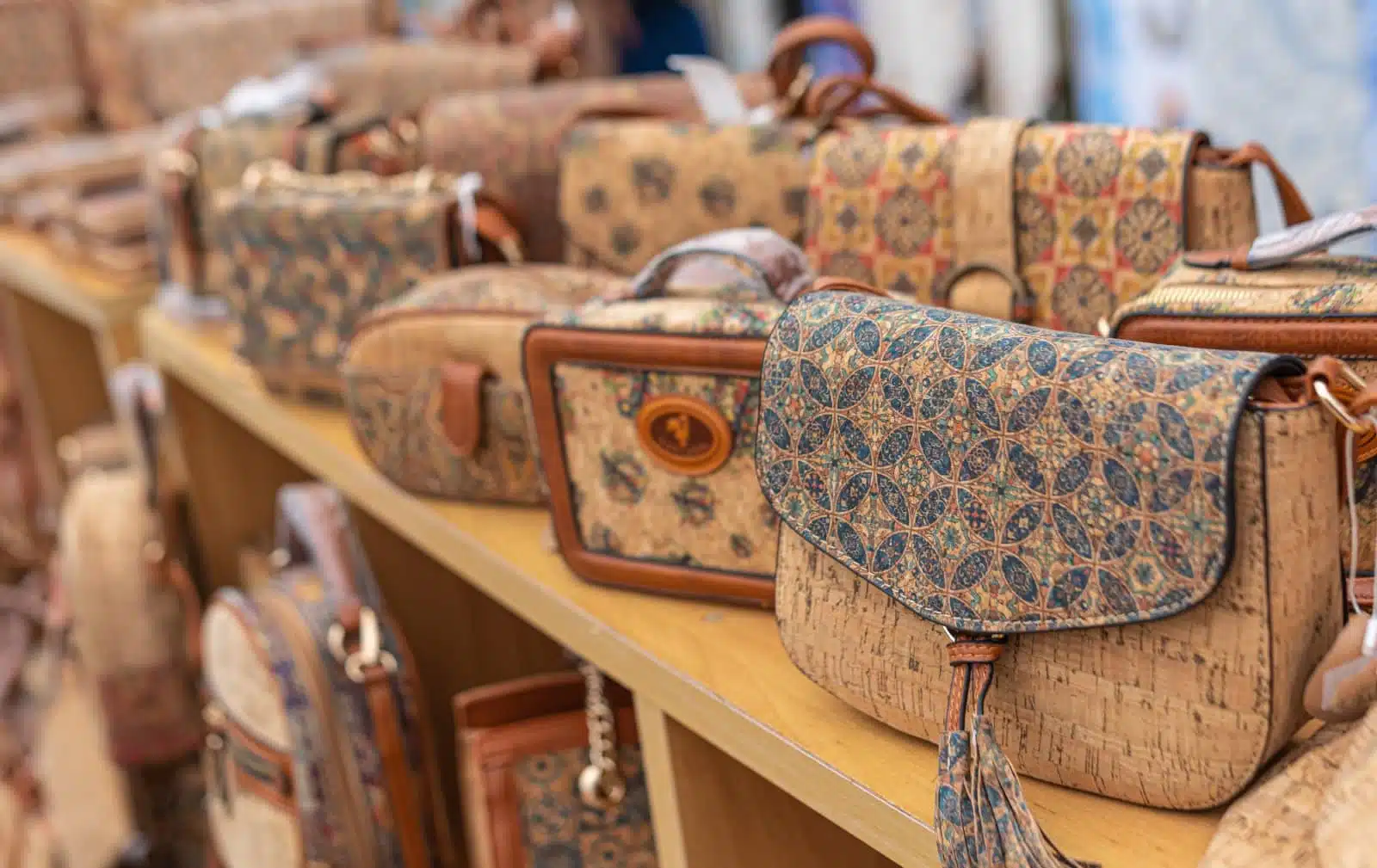
Image Credit: Shutterstock / BooFamily
Portugal is the world’s leading cork producer, and local artisans have mastered the art of creating sustainable cork products ranging from fashion accessories to home decor. Cork harvesting is an environmentally friendly process that does not harm the tree, making cork products a perfect eco-friendly souvenir. These items support sustainable practices, the local economy, and traditional Portuguese craftsmanship.
Insider’s Tip: Look for products made from 100% natural cork for the most sustainable option. Visiting cork farms and factories can provide insight into the fascinating cork production process.
When to Travel: Spring (March to May) and fall (September to November) offer mild weather ideal for exploring Portugal and its cork-producing regions.
How to Get There: Fly into Lisbon or Porto, where you can easily find various cork products in local shops. For a deeper exploration, rent a car and visit the Alentejo region, the heart of Portugal’s cork industry.
11. Eco-Friendly Wool Products from New Zealand

Image Credit: Pexels / Pavel Danilyuk
New Zealand’s wool products are world-renowned for their quality and the country’s commitment to sustainable and ethical farming practices. Local artisans create a range of wool products, from clothing to blankets, using wool from sheep farmed in a way that promotes animal welfare and land conservation. Purchasing these products supports New Zealand’s eco-friendly approach to agriculture and the artisans who craft these goods.
Insider’s Tip: When selecting wool products, look for those labeled with the New Zealand FernMark, which signifies quality and authenticity. Visiting a local farm can also offer a firsthand look at sustainable farming practices.
When to Travel: New Zealand is a year-round destination, but spring (September to November) and autumn (March to May) offer mild weather perfect for exploring the countryside and visiting farms.
How to Get There: International flights arrive in Auckland, Wellington, and Christchurch. From these cities, local transportation options can take you to artisan shops and wool producers throughout the country.
12. Lacquerware from Vietnam
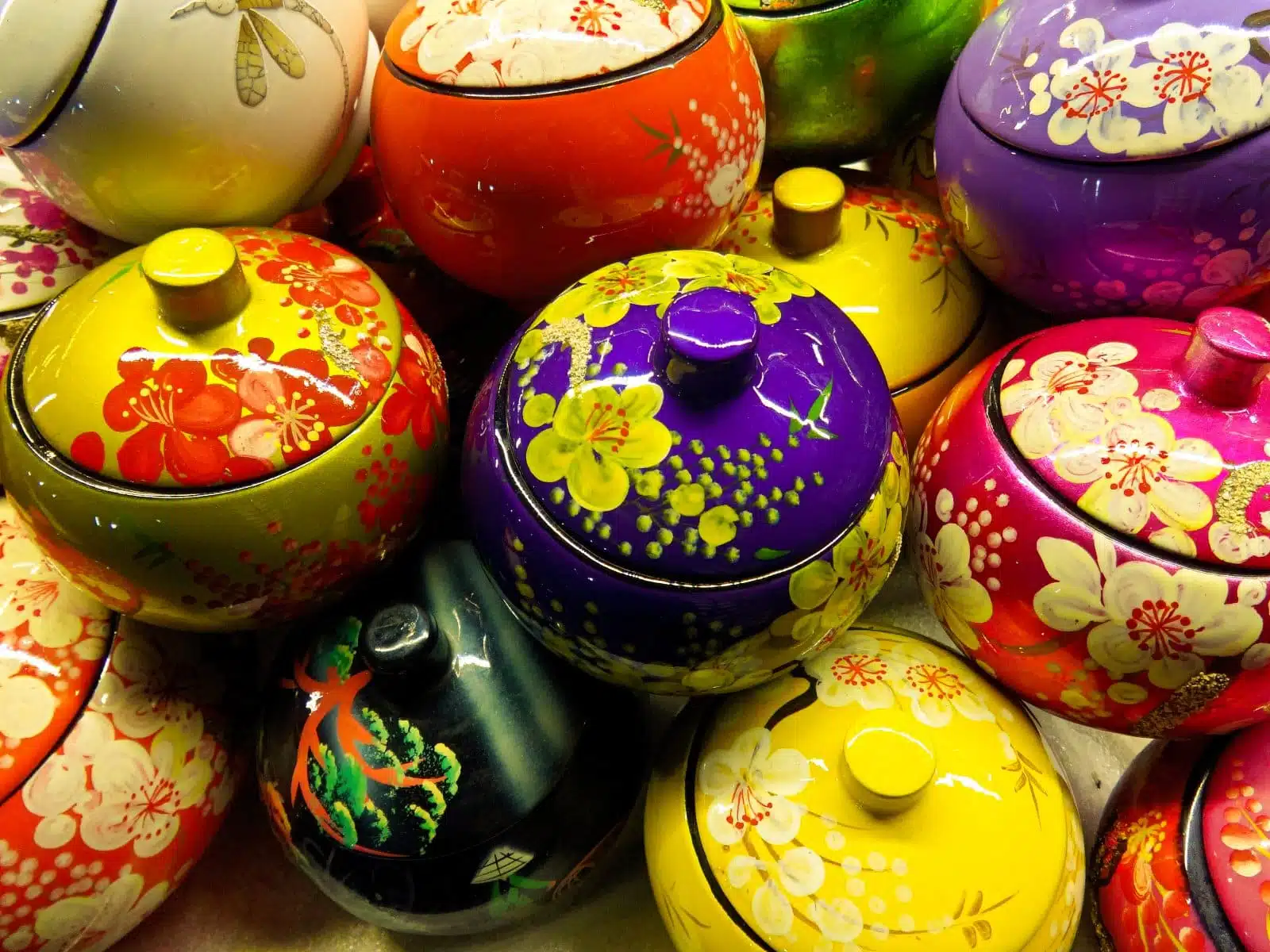
Image Credit: Shutterstock / martinxmarie
Vietnamese lacquerware is a traditional craft that produces stunningly beautiful items, from vases to jewelry boxes, using techniques that date back centuries. Artisans apply numerous layers of lacquer derived from the lacquer tree sap, followed by meticulous hand-polishing to achieve a deep, lustrous finish. These eco-friendly souvenirs support the preservation of Vietnamese craftsmanship and provide a sustainable alternative to mass-produced goods.
Insider’s Tip: Purchase lacquerware directly from artisan workshops or cooperatives to ensure authenticity and fair trade practices. The Ha Thai and Cat Dang villages are famous for their lacquerware and offer the chance to see artisans at work.
When to Travel: The best time to visit Vietnam varies by region, but generally, the cooler, dry season from November to April is most comfortable for travel.
How to Get There: Hanoi and Ho Chi Minh City are the main international gateways to Vietnam, with local transportation options available to take you to regions known for lacquerware production.
The Bottom Line
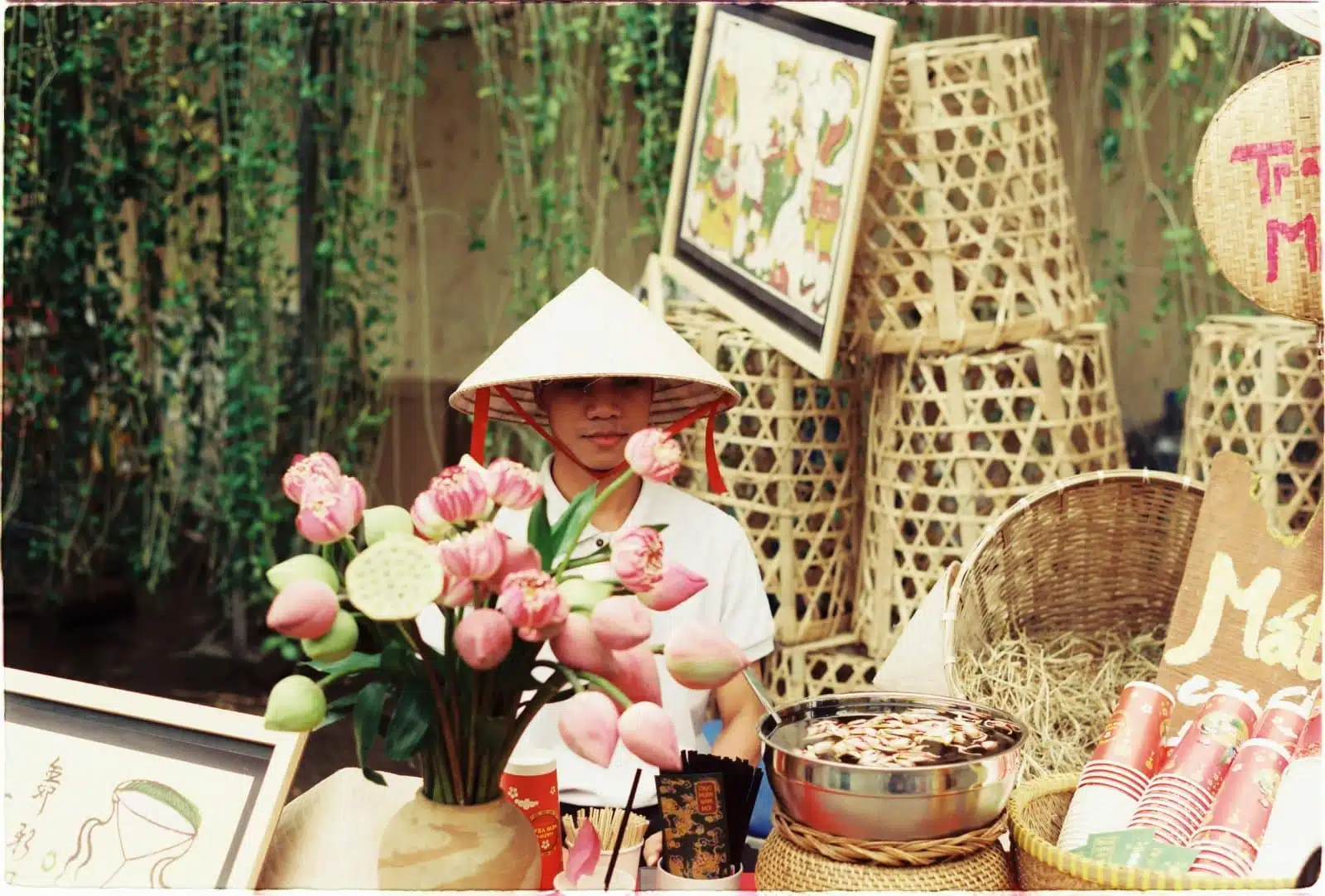
Image Credit: Pexels / Nam Quân Nguyễn
Choosing eco-friendly souvenirs is a powerful way to make your travel more sustainable and impactful. By supporting local artisans and opting for goods that are handmade and environmentally conscious, you contribute to the preservation of traditional crafts and the well-being of the communities you visit. Whether it’s the vibrant textiles of Guatemala, the intricate pottery of Morocco, or the innovative recycled art of Haiti, each eco-friendly souvenir carries with it a story of culture, craftsmanship, and conscious travel. As you explore the world, remember that the most meaningful souvenirs are those that honor the environment and the people who make them, leaving a positive footprint on the places you cherish.
More From The Green Voyage
Top 10 Trending Travel Destinations 2024
6 Essential Banking Apps for International Travel – Managing Your Finances on the Go
Traveling With Kids – 10 Tips to Create Memorable Family Holidays
The post Eco-Friendly Souvenirs – Supporting Local Artisans 2024 first appeared on The Green Voyage.
Featured Image Credit: Pexels / cottonbro studio.
For transparency, this content was partly developed with AI assistance and carefully curated by an experienced editor to be informative and ensure accuracy.
